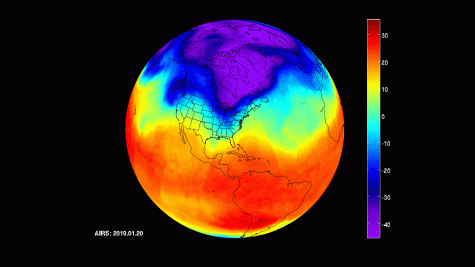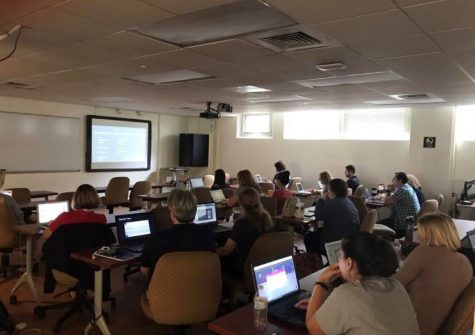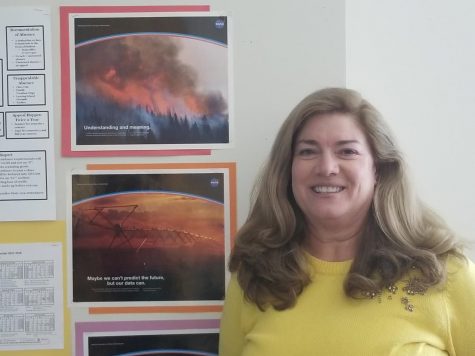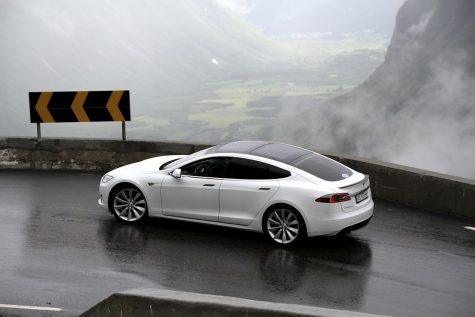Oh No El Niño
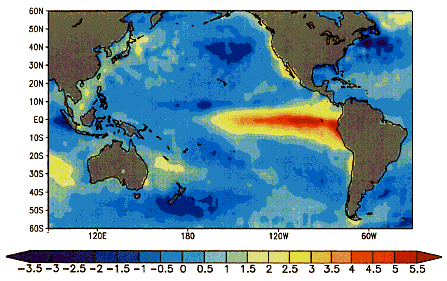
National Centers for Environmental Prediction
A Map of El Niño
February 21, 2016
It is a mystery to no one that we are having a warmer than normal winter. With a record breaking 70 degree Christmas and the first confirmed hurricane in January since 1938, it has begun to leave me wondering “Where did winter go?”.
There seem to be many factors contributing to our extraordinarily abnormal winter. The first factor is “El Niño”, a term is thrown around a lot in the media, but what is it actually? El Niño is the warm phase of the El Niño-Southern Oscillation (ENSO), which is indicated by above average ocean surface water temperatures in the area off the coasts of Colombia, Ecuador, and Peru stretching in a horizontal stripe westward across the Pacific. This water, which is many degrees Celsius above normal, causes the usual distribution of thermal energy in the air to become disrupted and results in warmer and drier than normal winters along the northern extent of US and cooler and wetter than normal winters along the southern extent of the US. So for us North easterners that means a warmer and drier winter. However, this is only partially responsible for our so irregular winter.
The trend of global warming has been recorded and established officially since 1975 following a study of how airplane emissions affect trace gasses in the stratosphere (Ozone), and the evidence to support it has only mounted since. 2015 was the warmest year on record, breaking the previous record held by 2014, and topping out the list of the top 10 warmest years on record (all of which have been recorded since 1998). The global average temperature of 2015 was 2.4 degrees Fahrenheit above the 20th-century average. It is agreed upon by 97 percent of actively published climate scientists agree that warming trends of our planet are human caused. There is no longer a debate on whether or not our planet is warming, and there is only a small minority of climatologists who dispute the fact that it is human caused. Currently, the global average carbon dioxide parts per million (CO2 ppm) is at 401.85, which is around 100ppm above the highest measured CO2 ppm in Earth history. Being a greenhouse gas, these excessive amounts of CO2 is trapping increasing amounts thermal energy rebounding from Earth’s surface that usually would have escaped the atmosphere and dissipated in space. Since the beginning of the industrial revolution Human activity (specifically the burning of fossil fuels) has resulted in an almost 110 parts per million increase in atmospheric CO2 concentrations. At the rate that we are pumping CO2 into the atmosphere and the rate at which the Earth is warming as a result, it is becoming increasingly likely that within the next 50 years Connecticut will have a climate that more summarily matches that of South Carolina than what we have now. This winter seems to be just a taste of what the reality will be in the near future, and I don’t like it.
However, hope is not completely lost for our planet. Since there is no one over the hill who is coming to save us we are going to have to save ourselves, which is something we already know how to do. To prevent this unusually warm winter from becoming an average winter in the future, all we have to do is reduce our CO2 emissions, which is easier said than done. With the completion of the 2015 United Nations Climate Change Conference (COP21) in Paris, last year leaders from 149 countries have agreed to make significant reductions in CO2 emissions, with President Obama pledging to reduce our emissions by 26%. This conference was a massive step in the right direction, it was the first time that world leaders had ever recognized and acted upon climate change as they tried to prevent global average temperature change due to human activity from climbing above two degrees Celsius. While climate change may seem like a problem too big for any one person to effect or that it should be handled by only the leaders of the world, there is a lot you could do. Things like turning off the lights when you leave the room, turning down the thermostat, and driving a more efficient car are all very good ways of reducing your carbon footprint since transportation and residential sectors account for just over 30% of emissions in the US. But one of the most important things you could do is writing a letter to your congressman and exercising your right to vote. Electricity production accounts for 31% of all emissions in the US because the vast majority of US power is produced by burning fossil fuels. While electricity production may seem out of your hands, by writing to your congressman or voting for an official who supports green energy your voice can be heard and policies can be changed. To avoid this storm looming on the horizon we need to make some big changes, and one of the best ways to do that is to make sure the people in charge are ready to act. The time to act is now, or winter maybe becomes a forgotten season.



